You can use the forms On Filter event to sync up the filters. However, I assume you've bound the subforms directly to the table.
Because you've bound the subforms directly to table, you can't listen to events. However, I've recently encountered that issue, and have a hacky workaround, but you don't need to use that if your field names and table names are constant. You just need to wrap TableA in a datasheet form.
Open up TableA, and go to the Create tab, then More Forms -> Datasheet. You now have a datasheet form that captures all fields from TableA. Then, add a module to that datasheet form. You don't need any code in that module.
Then, instead of binding the first subform to TableA, we bind it to this datasheet form instead.
Now, on the parent form, we're going to set up an event handler for the filter.
On the parent form (I'm assuming the name of your subform control for tableA is SubA, for tableB SubB, for TableC SubC):
Private WithEvents tblAForm As Form 'Declare tblAForm to handle events
Private Sub Form_Load()
'Initialize event handler, sync initially
Set tblAForm = Me.Controls("subA").Form
tblAForm.OnApplyFilter = "[Event Procedure]"
SyncFilters 'Not needed if you're not persisting filters, which you likely aren't
End Sub
Private Sub tblAForm_ApplyFilter(Cancel As Integer, ApplyType As Integer)
'Sync filters
SyncFilters(ApplyType)
End Sub
Private Sub SyncFilters(ApplyType As Integer)
Dim srcB As String
Dim srcC As String
Dim strFilter As String
Dim strOrder As String
'If filter or sort are on on TableA, we need to join in TableA for sorting and filtering
If tblAForm.FilterOn Or tblAForm.OrderByOn Then
srcB = "SELECT TableB.* FROM TableB INNER JOIN TableA On TableA.ID = TableB.ID"
srcC = "SELECT TableC.* FROM TableC INNER JOIN TableA On TableA.ID = TableC.ID"
'Filter to SQL
strFilter = " WHERE " & tblAForm.Filter
'Sort to SQL
strOrder = " ORDER BY " & tblAForm.OrderBy
If tblAForm.FilterOn And tblAForm.Filter & "" <> "" And ApplyType <> 0 Then
'If the filter is on, add it
srcB = srcB & strFilter
srcC = srcC & strFilter
End If
If tblAForm.OrderByOn And tblAForm.OrderBy & "" <> "" Then
'If order by is on, add it
strB = srcB & strOrder
srcC = srcC & strOrder
End If
Else
srcB = "SELECT TableB.* FROM TableB"
srcC = "SELECT TableC.* FROM TableC"
End If
If srcB <> Me.SubB.Form.RecordSource Then Me.SubB.Form.RecordSource = srcB
If srcC <> Me.SubC.Form.RecordSource Then Me.SubC.Form.RecordSource = srcC
End Sub
Note that you do need some spare fields to allow for filtering and ordering. Any field that's used for that does count towards the maximum of 255 fields. If you might hit that, you could consider splitting the dataset into 4 tables instead of 3
